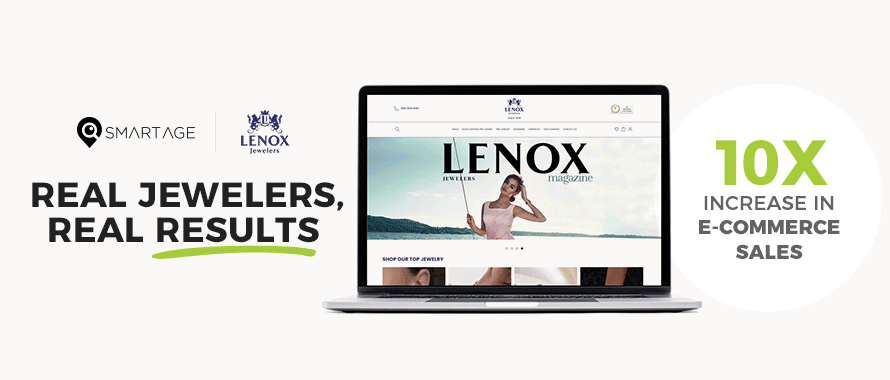Inbound 4: Beginning To Plan Our Content
June 18, 2018 (0 comments)

Consumers don't want to be sold to - they want to be educated. Today's shoppers do an enormous amount of research prior to walking into your jewelry store. As such, we need to treat our marketing effort differently than we may have in prior years. Rather than being salesy, we need to be as helpful as possible. Doing "inbound" right makes you look like rockstars to your customers, because you'll be building rapport, brand authority, and positioning yourself as the expert that they should go to when they're ready to make their next purchase.
A store that can help a customer feel like they're making a smart, well-informed decision will grab the business and keep the customer for years.
So how do we do this?
We blog. We make videos. We create things that people actually want to read about, and then distribute these pieces of content intelligently online.
It doesn't matter if you're trying to drive more foot traffic to your store or sell product online. You need to get people to your website first. Great content gets their eyes on your site. Use this opportunity to create value. They'll see the jewelry throughout the site. Don't worry.
Theres a company outside of the jewelry space called Onnit. Onnit, partially owned by Joe Rogan, is a fitness and supplement company that specializes in "functional, athletic" types of strength training. One of their big marketing efforts when they launched was the purchase of My Mad Methods, a popular online news site all about the world of this type of strength training. Onnit did this because they now had an incredible source of content, fitness videos, nutritional articles, and more that spoke to the exact type of audience they sold products to. And throughout every single piece of content, the name Onnit was displayed. So were their products. And people started associating Onnit as the experts in this field. Their articles showed that they were real experts in their field, and then they used this brand recognition to encourage views to their store page. If they're the experts in this type of fitness, their products must be great. Right? Who knows. But people sure think so.
Making Personas
How well do you know your customers - really? Its usually a good idea to start an inbound marketing campaign by making some personas, but you may decide to skip this step if you think you really know your customers. Give it a look.
These "personas" are fake people we'll make up that represent your typical customers. Doing this sometimes helps us realize the best ways to market to them and the right type of content to produce. We need to know how are customers think, otherwise we'll just be attracting any random people to our sites, or wasting our marketing dollars marketing to the wrong people.
If you'd like to skip this part, move ahead. If you'd like a great tool to help make your personas, Hubspot has an online tool that can guide you through it.
https://www.makemypersona.com/
Researching topics
Many companies conduct keyword research and carefully select the topics they write about. Some companies simply decide to write about things they're passionate about and think their customers may want to know. Ultimately, its your choice.
Keyword research enables us to identify the search terms that people are Googling. We can then create marketing content designed to answer these exact queries.
For two very in-depth guides for performing keyword research, I'd recommend these resources:
Guide 1 (Curata)
Guide 2 (Content Marketing Institute)
I tend to think that small businesses, especially ones focused locally, should just pump out content. I think by now you probably know who your customers are and can figure out the types of articles that may appeal to them. Two hours of keyword research could be an extra article or two for you to post. Its up to you.
Customer Journey
What I think matters much more is making sure you create content for EACH STEP of your customer journey.
There are three phases of any customer's journey - Awareness stage, Consideration stage, and Decision stage. Every interaction your company has with a customer should be tailored to where they are in this sales process. Makes sense right? You wouldn't have someone from your sales team approach a customer in the store telling them about all these fancy diamonds they can buy after they're already about to pay. That just doesn't make sense. You're past that already.
We have to think of content the same way. One of the visitors to your website may be a young man browsing engagement rings for the first time, thinking of proposing to his girlfriend. But you'll also likely have customers who have done a lot of product research and are almost ready to make a purchase. These two types of customers have vastly different needs right now. We want to make sure that our website has a bit of content for everyone, no matter where they are in that sales process.

I think we're all clever enough to understand the buyer's journey. The awareness stage is when your prospect is experienced and expressing symptoms of a problem or opportunity. They're searching for answers to their problem. In your case, it may be when a millenial is considering proposing. This is not the point where the customer is aware of their business - they're just aware of their problem.
In the consideration stage, they buyer has clearly defined the goal or challenge. They're committed to addressing their problem, now that they think they know how to fix it. This is when they'll explore ways to solve their problem. In your case, this could be when the millenial starts looking for jewelry stores or ring styles. This isn't the point where they're considering your business. They're exploring all their options.
The decision stage is when the buyer has decided what they want. Now they're deciding where to buy it/where to solve it. Its when theyre deciding on vendors.
For marketing, create content at every stage. There are tools to measure which pieces of content are getting the most attention, and to see which customers are in what part of their buying journey. We can even segment our content into different categories, and only send our customers content that is relevant to them, based on what they've previously read or opened.
See you in my next article!
 Consumers don't want to be sold to - they want to be educated. Today's shoppers do an enormous amount of research prior to walking into your jewelry store. As such, we need to treat our marketing effort differently than we may have in prior years. Rather than being salesy, we need to be as helpful as possible. Doing "inbound" right makes you look like rockstars to your customers, because you'll be building rapport, brand authority, and positioning yourself as the expert that they should go to when they're ready to make their next purchase.
A store that can help a customer feel like they're making a smart, well-informed decision will grab the business and keep the customer for years.
Consumers don't want to be sold to - they want to be educated. Today's shoppers do an enormous amount of research prior to walking into your jewelry store. As such, we need to treat our marketing effort differently than we may have in prior years. Rather than being salesy, we need to be as helpful as possible. Doing "inbound" right makes you look like rockstars to your customers, because you'll be building rapport, brand authority, and positioning yourself as the expert that they should go to when they're ready to make their next purchase.
A store that can help a customer feel like they're making a smart, well-informed decision will grab the business and keep the customer for years.
 I think we're all clever enough to understand the buyer's journey. The awareness stage is when your prospect is experienced and expressing symptoms of a problem or opportunity. They're searching for answers to their problem. In your case, it may be when a millenial is considering proposing. This is not the point where the customer is aware of their business - they're just aware of their problem.
In the consideration stage, they buyer has clearly defined the goal or challenge. They're committed to addressing their problem, now that they think they know how to fix it. This is when they'll explore ways to solve their problem. In your case, this could be when the millenial starts looking for jewelry stores or ring styles. This isn't the point where they're considering your business. They're exploring all their options.
The decision stage is when the buyer has decided what they want. Now they're deciding where to buy it/where to solve it. Its when theyre deciding on vendors.
For marketing, create content at every stage. There are tools to measure which pieces of content are getting the most attention, and to see which customers are in what part of their buying journey. We can even segment our content into different categories, and only send our customers content that is relevant to them, based on what they've previously read or opened.
See you in my next article!
I think we're all clever enough to understand the buyer's journey. The awareness stage is when your prospect is experienced and expressing symptoms of a problem or opportunity. They're searching for answers to their problem. In your case, it may be when a millenial is considering proposing. This is not the point where the customer is aware of their business - they're just aware of their problem.
In the consideration stage, they buyer has clearly defined the goal or challenge. They're committed to addressing their problem, now that they think they know how to fix it. This is when they'll explore ways to solve their problem. In your case, this could be when the millenial starts looking for jewelry stores or ring styles. This isn't the point where they're considering your business. They're exploring all their options.
The decision stage is when the buyer has decided what they want. Now they're deciding where to buy it/where to solve it. Its when theyre deciding on vendors.
For marketing, create content at every stage. There are tools to measure which pieces of content are getting the most attention, and to see which customers are in what part of their buying journey. We can even segment our content into different categories, and only send our customers content that is relevant to them, based on what they've previously read or opened.
See you in my next article!


